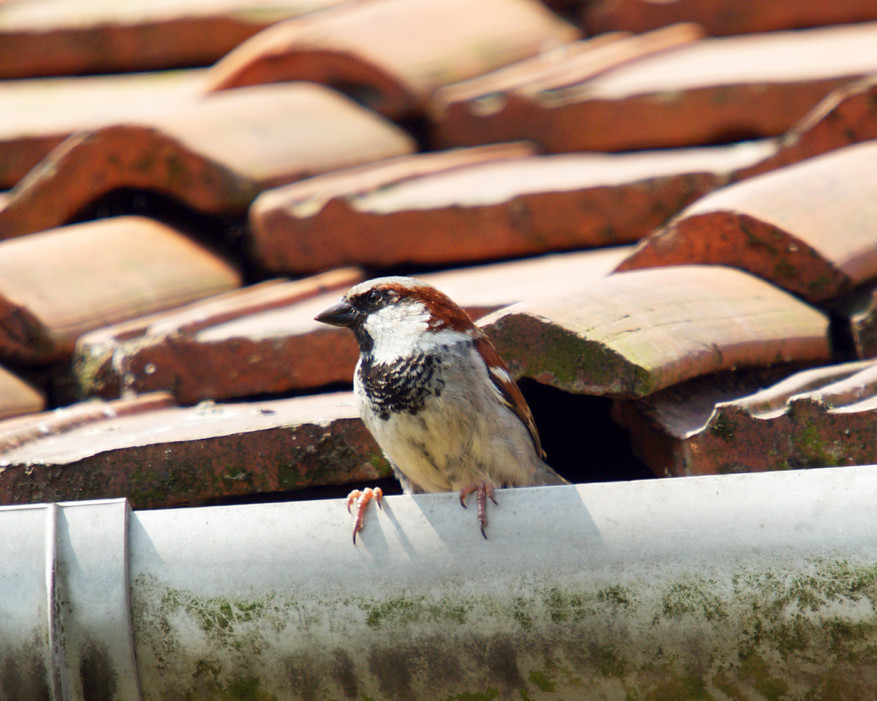Are House Sparrows invading to your house this Spring?
House Sparrows, passer domesticus, are aggressive birds that are very abundant. Where there are houses and/or buildings, there will be sparrows. They are one of the most common birds found around the home. You might get so used to seeing them around, that you do not realize that they are a pest bird and should be deterred. They are aggressive and more often than not displace native birds from nest boxes. It is hard to overlook the house sparrow when they are the number one adversary of the bluebird and purple martin. Bird lovers who try and entice the jaybird into their yards are often disappointed by the nuisance House Sparrow. The house sparrow has been observed threatening and attacking over 70 species that come within their nesting territory. If you are interested in experiencing the bluebird in your yard, you will need to be very serious about controlling the house sparrow.
The damage the House Sparrow causes in another reason to implement bird control to keep them away. They damage gardens by eating the seeds, buds and flowers, and young vegetation from the garden such as peas and lettuces. They harm cherry, peaches and pear trees as well.
More detrimental than the health of the garden is the health of the family. House Sparrow droppings create contaminated, hazardous, and odoriferous situations around the walkways and structures, anywhere under their perching, roosting and nesting areas. If they are allowed to build nests their acidic droppings can damage paint, block gutters and also create fire hazards by nesting around electrical units, dryer vents and even power lines. Sparrows and other pest birds can also carry and spread many human and livestock diseases and internal parasites. This includes fleas, lice, mites and ticks. Other pest birds may also have these diseases and parasites, but the house sparrow is more likely to transmit them due to the abundance of the bird.
Bird netting can be applied to fruit trees and gardens. Bird netting over trees and bushes is a low profile means of deterring the pest sparrow from roosting or nesting. The bird netting blends in with the plants and is basically invisible. The netting is a light weight physical bird deterrent that simply acts as a barrier which blocks the birds from the specified area. It can be used in garages, sheds, balconies and eaves as well. If there is a nook and cranny that needs to be protected, bird netting can be installed and secured using a staple gun or bird netting clips.
Another low profile and easy to implement bird deterrent for the sparrow is a bird gel. Bird gels are transparent. It is a non-toxic substance that sparrows and most other birds do not like. Bird gel creates a very sticky, uncomfortable area that gives the sparrow no choice by to fly on past. The bird gel can be used on any ledge, under eaves, window sills, any vertical surface where the pest sparrow would perch and roost. Using integrated bird control with both bird netting and transparent bird gel will guard against perching, roosting and netting at the same time.
For larger areas, when the pest sparrow is a nuisance such as a large backyard with lots of ground where the sparrow is seen in droves picking in the grass for seed, an outdoor sound device would be very advantageous. The sonic outdoor sound devices are designed to deter pest birds from large open spaces. The sonic sound device can be programmed to play the sparrow’s distress and predator calls. The calls alert the birds of danger and their natural instinct of fight or flight kicks in and they fly away from the area.
Bird deterrents do not have to be destructive to the bird or property. Bird control methods can blend into the environment and safely get rid of the pest bird.

